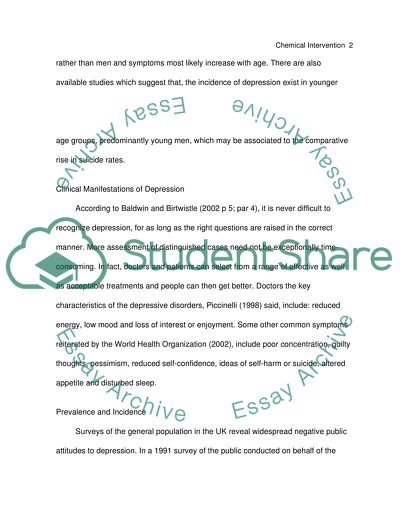Cite this document
(“Therapeutic Interventions of Depression Essay Example | Topics and Well Written Essays - 2500 words”, n.d.)
Therapeutic Interventions of Depression Essay Example | Topics and Well Written Essays - 2500 words. Retrieved from https://studentshare.org/health-sciences-medicine/1530962-therapeutic-interventions-of-depression
Therapeutic Interventions of Depression Essay Example | Topics and Well Written Essays - 2500 words. Retrieved from https://studentshare.org/health-sciences-medicine/1530962-therapeutic-interventions-of-depression
(Therapeutic Interventions of Depression Essay Example | Topics and Well Written Essays - 2500 Words)
Therapeutic Interventions of Depression Essay Example | Topics and Well Written Essays - 2500 Words. https://studentshare.org/health-sciences-medicine/1530962-therapeutic-interventions-of-depression.
Therapeutic Interventions of Depression Essay Example | Topics and Well Written Essays - 2500 Words. https://studentshare.org/health-sciences-medicine/1530962-therapeutic-interventions-of-depression.
“Therapeutic Interventions of Depression Essay Example | Topics and Well Written Essays - 2500 Words”, n.d. https://studentshare.org/health-sciences-medicine/1530962-therapeutic-interventions-of-depression.


